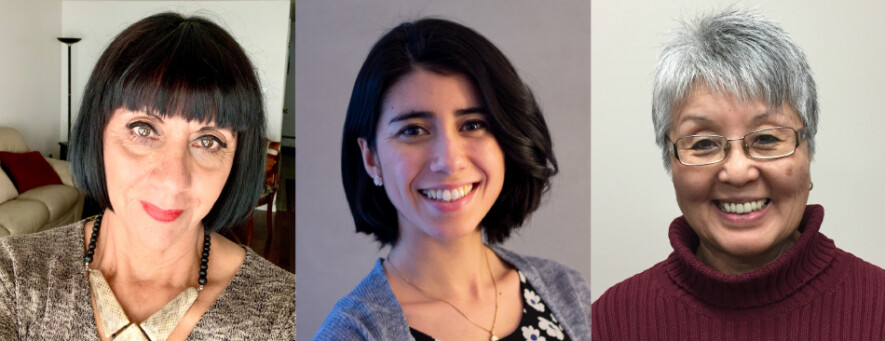
May is the Asian Heritage Month in Canada and this year the Vancouver Asian Heritage Month Society (VAHMS) also celebrates the 25th anniversary of its annual explorASIAN festival. The festival brings together a variety of art and culture programs for the public to learn more about the diverse communities in Asia.
“Every year we try to support a specific Asian community. This year we are also focusing on creating more educational events. Our work is to educate the public of the many Asian cultures, heritage, and traditions and make sure people see these communities in the best lights,” Leticia Sanchez, president of the Board at VAHMS says.
The Model Minority Myth
One of the programs at the festival is an interesting and timely workshop Deconstructing the Model Minority Myth offered by The Greater Vancouver Japanese Canadian Citizens’ Association(GVJCCA). It is a part of a series of workshops to address racism and support racialized communities.
“The Model Minority is basically a stereotype, it ends up homogenizing all these very different Asian communities into one group,” says Emiko Newman, “It is a stereotype that all Asians are good at math, are hardworking, and are successful. The myth creates a hierarchy where Asians are at the top at the expense of other racialized groups. The success of Asian communities becomes weaponized in that if you work hard and keep your head down then you will be successful and deserving of rights.” Newman is the workshop organizer and a master’s student of Social Justice Education at the University of Toronto.
“The model minority image is something taught within Asian family as a safety measure,” Judy Hanazawa, the president of the GVJCCA further explains, “The premise is that if you are hardworking and successful, you will be safer, you will be more accepted and you will be more prone to be seen on an equal level. It is a kind of strategy to offset racism, success is safety.”
GVJCCA has been established in Canada since the 1930s and it advocates for the rights of Japanese Canadians, particularly the survivors of internment camps during the second world war. It is currently in talks with the British Columbian government to redress all the losses and destruction suffered by the Japanese Canadians in the 1940s.
The experience of Japanese Canadians illustrates well the trajectory of a “model minority”. During the second world war, some 21,000 Japanese Canadians were taken from their homes on Canada’s West Coast, many were stripped of their properties and were pressured to accept mass deportation after the war. Japanese people have been settling in Canada since the late 19th century due to economic hardships at home according to Hanazawa.
“It was the largest property grab separate from the Indigenous people. Because of the destruction, there has been a lot of intermarrying and our community has dispersed throughout Canada. There is also a strong sense of shame culture as Asian that what you appear on the outside is not to be criticized. So when you look at being a model minority, it was a way that people needed then to get back to finding security, being accepted, and never be rejected. It is destructive but it is the way for us to survive,” Hanazawa says.
She adds that with those kinds of goals as a community, there is no sense of what it would do to other communities of colour and it leads to a separation from other racialized communities that suffer similar tragedies. “There is no sense of understanding of the indigenous suffering that is fundamental to Canada. The way that racism violates people is that it diminishes the sense of empathy,” she says.
For Newman, the model minority myth also perpetuates the idea that Asian communities actually benefited from the system and worked their ways to the top when it hides the truth that systematic discrimination continues.
“There is still this myth that Canada was founded as this benevolent country, one of the first steps in addressing racism is to acknowledge that it happened,” she says, “COVID shows us that racism has not gone away. Anti-Asian racism is still very present but it slips through the radar and the model minority is one way that happens,” says Newman.
Education is the key
Hanazawa believes that a fundamental change that needs to happen is the history education of people of colour in Canada on a mandatory level.
“There is a need for racialized communities to develop allyship with each other, but they don’t know each other’s histories well to become allies. There is a need for our community to have dialogues to understand some internalized racism issues. The white community also needs to look internally at their own racism, and how they have sustained the power structure,” she says.
Sanchez concurs that education is the key and the festival serves as such a platform to foster better communications and understandings among different communities.
“For me as a non-Asian, I can see how we can make an effort to really understand the world outside of us and how all the Asian communities can come together, that is the main objective of the festival. The more we learn about pan-Asian heritage and culture, the more we will understand and appreciate different ways of thinking and living, so we can better integrate as a unified society,” she states.
This year’s festival will showcase more than 15 virtual events, from online videos, gallery exhibitions to informative workshops, many of which are produced by VAHMS.
To find out more, please go to: www.explorasian.org







